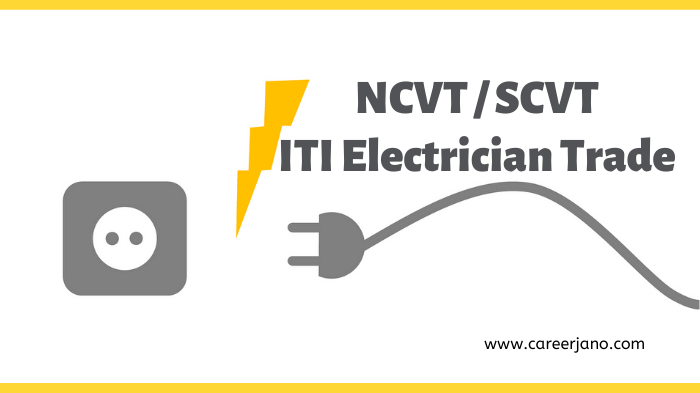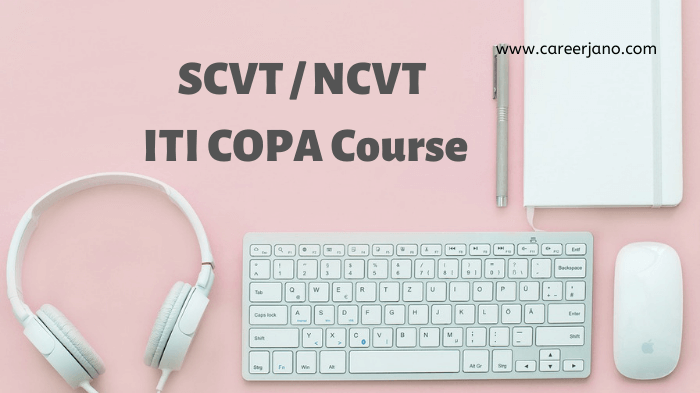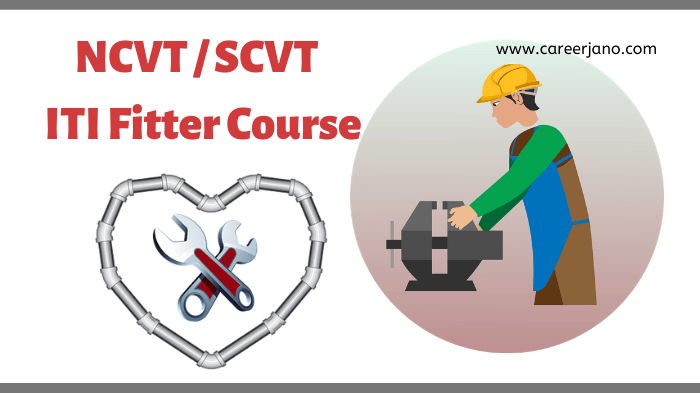ITI Electronics Mechanic Syllabus को जानने के लिए यह लेख पूरा पढ़ें| यहाँ पर ITI Electronic Mechanic के new और updated पाठ्यक्रम को साझा किया गया है|
इस लेख के जरिये आप जान सकेंगे की आपको ITI Electronics Mechanic के इस 2 साल के course के अंदर क्या-क्या पढ़ना होगा|
Craftsman Training Scheme (CTS) के तहत आईटीआई की यह trade देश भर में वितरित किए जाने वाले सबसे लोकप्रिय पाठ्यक्रमों में से एक है।
DGT द्वारा निर्धारित ITI Electronics Mechanic के इस 2 साल के अवधि वाले course के दौरान एक उम्मीदवार को व्यावसायिक कौशल, व्यावसायिक ज्ञान, इंजीनियरिंग ड्राइंग, कार्यशाला विज्ञान और गणना विषयों के अलावा रोजगार कौशल के लिए भी प्रशिक्षित किया जाता है।
NCVT ITI Electronics Mechanic Syllabus 2024
ITI Electronics Mechanic के course में कुल पांच विषय है जिनको दो छेत्रों में बांटा गया है डोमेन क्षेत्र और कोर क्षेत्र|
ITI Electronics Mechanic का Domain Area (Trade Theory & Practical) व्यावसायिक कौशल और ज्ञान प्रदान करता है, वहीं Core Area (कार्यशाला गणना विज्ञान, इंजीनियरिंग ड्राइंग और रोजगार कौशल) मुख्य कौशल, ज्ञान और जीवन कौशल प्रदान करता है।
ITI Electronics Mechanic Syllabus के अंतर्गत यह पांच विषय आते हैं:
- Professional Knowledge / व्यावसायिक ज्ञान (Trade Theory)
- Professional Skill / व्यावसायिक कौशल (Trade Practical)
- Engineering Drawing
- Workshop Science & Calculation / कार्यशाला विज्ञान और गणना
- Employability Skills / रोजगार कौशल
इन पांच विषयों के अलावा एक उम्मीदवार को प्रोजेक्ट वर्क और एक्स्ट्रा करिकुलर एक्टिविटीज भी करनी होती है।
NCVT ITI Electronics Mechanic Syllabus 1st Year
Professional Knowledge Syllabus (Trade Theory)
सुरक्षित कामकाजी अभ्यास
- सुरक्षा और उद्योग /दुकान के फर्श में बरती जाने वाली सावधानियों का महत्व
- PPEs का परिचय
- First Aid
- आपात स्थिति: बिजली, आग और सिस्टम की विफलता
बुनियादी कार्यशाला संचालन
- आमतौर पर उपयोग किए जाने वाले हाथ उपकरणों की पहचान, specifications, उपयोग और रखरखाव।
- Fitting, Riveting, Drilling etc.
- टैग और लग्स की कटिंग, शीट मेटल्स, चेसिस और कैबिनेट्स को काटना और झुकाना।
Electrical/ Electronic Terms and Cables
- विद्युत आवेश, विभवांतर (potential difference), वोल्टेज, करंट, प्रतिरोध, Basics of AC & DC
- +ve cycle, -ve cycle, Frequency, Time period, RMS, Peak, Instantaneous value
- Single-phase and Three-phase supply
- इन्सुलेटर, कंडक्टर और अर्धचालक गुण
- तारों और केबलों के प्रकार, standard wire gauge (SWG)
Single range meters
- Electrical and electronic measuring instruments.
- Basic principle and parts of simple meters.
Cells & Battery
- प्रयुक्त सामग्री, निर्माण, primary और secondary cells के प्रकार
- चार्जिंग प्रक्रिया, electrolytes
- हाइड्रोमीटर का उपयोग
- बैटरी की श्रृंखला / समानांतर कनेक्शन
विद्युत मापने के उपकरण
- मीटर का वर्गीकरण, MC and MI meters
- मीटर में errors
- मल्टी मीटर, विभिन्न सर्किट में मीटर का उपयोग
- मीटर की देखभाल और रखरखाव
- CRO, Function generator, LCR meter
Soldering and De-soldering
- विभिन्न प्रकार के टांका लगाने वाली gun
- Solder materials और उनकी grading
- Flux और अन्य सामग्रियों का उपयोग
- विभिन्न स्विच, उनके विनिर्देश और उपयोग
Basic Electrical
- Ohm’s law and Kirchhoff’s Law
- प्रतिरोध और उनके प्रकार, series-parallel circuits
- Induction, Inductive Reactance, Capacitance and Capacitive Reactance, Impedance
- कैपेसिटर के प्रकार, एसी और डीसी के साथ व्यवहार
- Resonance, RC, RL & RLC circuit
- Magnets, Artificial magnets, Electro magnetism
Semiconductors
- Different electronic components: Diodes and Zener etc. PN Junction, डायोड के फॉरवर्ड और रिवर्स बायसिंग
- Forward current and Reverse voltage
- Rectifier, varactor diode
- Transformer, Step-up & Step down transformer
- Phase angle, phase relations, active and reactive power, power factor
Computer
- Hardware and software, I/O devices, Assemble a computer system, install OS
- MS Office (Word, Excel, PowerPoint)
- Internet, Browsers, Websites, search engines, email
Computer Networking
- Network topologies, protocols: TCP/IP, UDP, FTP, etc.
- Types of cables: UTP, STP, Coaxial cables
- Network components: hub, Ethernet switch, router, NIC Cards, connectors, media and firewall
- PC और Server के बीच अंतर
IC Regulators
- 78XX series, 79XX series.
- Op-amp regulator, 723 regulators
Transistor
- PNP and NPN Transistors
- E, B & C Terminals का उद्देश्य
- VBE, VCB, VCE, IC, IB, Junction Temperature, junction capacitance
- Different types of biasing, Transistor configurations: C-B, C-E & C-C
- Voltage amplifiers, Single-stage CE amplifier and CC amplifier, RC coupled amplifier, voltage and power amplifier, Push-pull amplifier and class C tuned amplifier
Oscillators
- Colpitts, Hartley, Crystal and RC oscillators.
- Multivibrators and study of circuit diagrams
Power Electronic Components
- FET और JFET का निर्माण, BJT के साथ अंतर
- Gate, Drain and Source terminals
- FET amplifiers
- SCR, TRIAC, DIAC, UJT
MOSFET & IGBT
- MOSFET, Power MOSFET and IGBT, their types, characteristics, switching speed, power ratings and protection.
- FET और MOSFET में अंतर
- Transistor और IGBT में अंतर
Opto Electronics
- LED, IR LEDs, Photo diode, Photo transistor, LASER diodes
- Optical sensor, opto couplers, opto isolators
Digital Electronics
- एनालॉग और डिजिटल सिग्नल के बीच अंतर
- Logic families, logic levels of TTL and CMOS
- Number systems: Decimal, binary, octal, Hexadecimal
- BCD code, ASCII code and code conversions
- Various Logic Gates and their truth tables
Combinational Circuits
- Combinational logic circuits: Half Adder, Full adder, Parallel Binary adders, 2-bit and 4-bit full adders
- Half adder, full adder ICs
- Concept of encoder and decoder. Basic Binary Decoder and four-bit binary decoders.
- 1:4 line Multiplexer / De-multiplexer
Flip-Flop
- S-R Latch, Gated S-R Latch, D-Latch
- Flip-Flop: Basic RS Flip Flop, edge-triggered D Flip Flop, JK Flip Flop, T Flip Flop.
- Master-Slave flip flops and Timing diagrams
- Basic flip flop applications like data storage, data transfer and frequency division.
Counter & shift Registers
- Basics of Counters and their types
- Two-bit and three-bit Asynchronous binary counters and decade counters
- 3-bit Synchronous counters and synchronous decade counters
- Seven segment display, BCD display
- BCD to decimal decoder & BCD to 7 segment display
Op-Amp & Timer 555
- 741 and 555 IC
- Non-inverting voltage amplifier, inverting voltage amplifier, summing amplifier, Comparator, zero cross detector, differentiator, integrator and instrumentation amplifier
Professional Skills 1st Year Syllabus (Trade Practical)
व्यापार और अभिविन्यास | हाथ उपकरण और उनके उपयोग | Basics of AC and Electrical Cables | Cells & Batteries | AC &DC measurements | Soldering/ De-soldering and Various Switches
Active and Passive Components |Power Supply Circuits | Computer Hardware, OS, MS office and Networking | IC Regulators | Transistors | Amplifier | Oscillators | Wave shaping circuits
Power Electronic Components | MOSFET & IGBT | Opto Electronics | Logic Gates | Combinational Circuits | Flip Flops | Electronic circuit simulator | Counter & shift Registers | Op-Amp & Timer 555 Applications
Engineering Drawing 1st Year Syllabus
- इंजीनियरिंग ड्राइंग: परिचय और इसका महत्व
- Drawing Instruments: Drawing board, T-Square, Drafter इत्यादि|
- Lines
- ज्यामितीय आकृतियों का आरेख
- आयाम
- Free hand drawing
- आकार और ड्राइंग शीट का लेआउट
- इंजीनियरिंग ड्राइंग की प्रस्तुति की विधि: Pictorial View, Orthogonal View, Isometric view
- Construction of Scales and diagonal scale
- Symbolic Representation (BIS SP:46-2003 के अनुसार)
- Lettering and Title Block
- ठोस आकृतियों की ड्राइंग (क्यूब, क्यूबॉइड्स, कोन, प्रिज़्म, पिरामिड, कोन और पिरामिड के आयाम)
- Free Hand sketch of hand tools and measuring tools used in respective trades
- Projections: Concept of axes plane and quadrant, Orthographic projections, Method of first angle and third angle
Workshop Science & Calculation 1st Year Syllabus
इकाई | वर्गमूल | अनुपात एवं समानुपात | प्रतिशत | बीजगणित | क्षेत्रमिति | त्रिकोणमिति | भौतिक विज्ञान | द्रव्यमान, वजन और घनत्व| ताप और तापमान | Basic Electricity | लीवर और सरल मशीनें | गति और वेग | काम, शक्ति और ऊर्जा
ITI के अन्य Trades के पाठ्यक्रम को जानें:
NCVT ITI Electronics Mechanic 2nd Year Syllabus
Professional Knowledge Syllabus (Trade Theory)
Digital Storage Oscilloscope
- DSO के लाभ और विशेषताएं
- Block diagram of Digital storage oscilloscope (DSO)
- CRO, function generator
- CRO और DSO में अंतर
SMD Technology
- Identification of 2, 3, 4 terminal SMD components
- Advantages of SMD components
- Reflow soldering, Inspection of SM
SMD Soldering and De-soldering
- Introduction to Surface Mount Technology (SMT)
- Solder paste (flux)
- Soldering of SM, reflow soldering
- Programmable Gate array (PGA) packages
- Identification of lose / dry solders, broken tracks
- Introduction to Pick place Machine, Reflow Oven, Preparing stencil, & stencil printer
Printed Circuit Board (PCB)
- Introduction to Static charges, prevention, handling of static sensitive devices, various standards for ESD
- Introduction to non-soldering interconnections
- Construction of Printed Circuit Boards (single, Double, Multi-layer)
- Introduction to rework and repair concepts
- Repair of damaged track and solder mask
सुरक्षा उपकरण
- Fuse, fuse ratings, types of fuses, and fuse bases
- Single/ three-phase MCBs, single-phase ELCBs
- Types of contactors, relays and working voltages
Induction motors
- Single-phase Induction motors
- Synchronous speed, slip, rotor frequency
- Torque-speed characteristics, Starters used for Induction motors
Electronic Cables & Connectors
- Classification of electronic cables
- Different types of connector: Servo 0.1” connectors, FTP, RCA, BNC, HDMI Audio/video connectors, USB, Fire wire, SATA Connectors, VGA, DVI connectors, MIDI and RJ45, RJ11 etc.
- Male / female type DB connectors
- Ethernet 10 Base cross over cables, UTP and STP, SCTP, TPC, coaxial, fibre optical Cables and Cable trays
Communication Electronics
- Radio Wave Propagation
- Need for Modulation, types of modulation and demodulation
- Fundamentals of Antenna, various parameters, types of Antennas & application
- Introduction to AM, FM & PM, SSB-SC & DSB-SC
- FM Generation & Detection
- Digital modulation and demodulation techniques, sampling, quantization & encoding.
- Concept of multiplexing and de-multiplexing of AM/ FM/ PAM/ PPM/ PWM signals
Microprocessor & Microcontroller
- Microprocessor & 8051 and 8052 Microcontroller, architecture, pin details, I/O port pin configuration & the bus system.
- Microprocessor और microcontroller में अंतर
- SFRs & their configuration for different applications
- Introduction to PIC Architecture
Sensor & Transducer
- Passive and active transducers, Inductive/ capacitive transducers
- Thermistors/ Thermocouples, Proximity sensors
- LVDT (Linear variable differential transformer)
Integrated Circuits
- ICs: 741, 723, 555, 7106, 7107
Fiber optic communication
- Introduction to optical fiber, optical connection and various types of the optical amplifier, its advantages
- Properties of optic fiber, testing, losses, types of fiber optic cables and specifications
- ऑप्टिकल केबल को संभालते समय सावधानियां और सुरक्षा पहलू।
Displays
- Seven segment displays, decoders and driver ICs
- Multiplexing की अवधारणा और इसके फायदे।
- Block diagrams of 7106 and 7107
- LCD और Seven segment display के साथ DPM का उपयोग।
- Principles of working of LCD, Different sizes of LCDs.
SMPS and Inverter
- Manual, automatic and servo voltage stabilize
- Block Diagram of different types of Switch mode power supplies
- Various types of chopper circuits
- Installation of inverters, इनवर्टर में उपयोग किए जाने वाले सुरक्षा सर्किट
- इन्वर्टर में विभिन्न दोष और उसके सुधार
- DC-DC converters और उनके कार्यकारी प्रिंसिपलों के Block diagram
Uninterrupted Power Supply (UPS)
- Inverters और UPS के बीच अंतर
- Types of UPS: Off line UPS, On line UPS, Line-interactive UPS
- Installation of single phase & three phase UPS
सौर ऊर्जा (Renewable Energy System)
- Materials used for solar cells
- Principles of conversion of solar light into electricity
- Basics of photovoltaic cell
Cell phones
- मोबाइल संचार का परिचय
- GSM and CDMA technology
- खोए हुए मोबाइल फ़ोन को ट्रेस करने के लिए IEMI नंबर का उपयोग
LED Lights
- LED panels के प्रकार
- Stacking of LEDs
- Driving of LED stacks
LCD and LED TV
- CTV, LCD और LED TV के बीच अंतर।
- Basic principle and working of 3D TV
- Interfaces: HDMI, USB, RGB etc.
- IR Code transmitter and IR Code Receiver
Professional Skills 2nd Year Syllabus (Trade Practical)
Digital Storage Oscilloscope | Basic SMD (2, 3, 4 terminal components) | SMD Soldering and De-soldering | PCB Rework | सुरक्षा उपकरण | विद्युत नियंत्रण सर्किट | Electronic Cables & Connectors
Communication electronics | Microcontroller (8051) | Sensors, Transducers and Applications| Analog IC Applications | Digital IC Applications | Fiber optic communication
Digital panel Meter | SMPS and Inverter | UPS | Solar Power (Renewable Energy System) | Cell phones | LED Lights | LCD and LED TV
Engineering Drawing 2nd Year Syllabus
Electronics Mechanic Trade से संबंधित आपको इन सभी topics पर drawing करनी होगी:
CRO | Surface Mounting devices (SMD) | Electrical Protective Devices | Microcontroller | Modulation | Generator | Symbol of electronic component | DTH system | Cell Phone | Power supply | Dancing LED’sB | Smoke detector | Mobile charger | Metal detector | Solar power | Fibre optic communication
Workshop Science & Calculation 2nd Year Syllabus
Elasticity | Material | Magnetism | Pressure | Indices | Quadratic Equation | A.C Waveform Calculation | Series and Parallel Connection of Electrical and Electronic components
Power supply | Motor parameters & Calculation | Modulation | नंबर सिस्टम | बूलियन बीजगणित | Project costing | Power transmission | Friction | बल | गुरुत्वाकर्षण
ITI Electronics Mechanic Employability Skills Syllabus
English Literacy: Pronunciation, Functional Grammar, Reading, Writing, Speaking/ Spoken English
IT साक्षरता: कंप्यूटर, कंप्यूटर ऑपरेटिंग सिस्टम, वर्ड प्रोसेसिंग और वर्कशीट, कंप्यूटर नेटवर्किंग और इंटरनेट की मूल बातें
Communication Skills: Introduction to Communication Skills, Listening Skills, Motivational Training, Facing Interviews, Behavioral Skills
Entrepreneurship Skills: Concept of Entrepreneurship, Project की तैयारी और Marketing विश्लेषण, संस्थान का समर्थन, निवेश अधिप्राप्ति
Productivity/उत्पादकता: लाभ, प्रभावित करने वाले कारक, विकसित देशों के साथ तुलना, व्यक्तिगत वित्त प्रबंधन
व्यावसायिक सुरक्षा, स्वास्थ्य और पर्यावरण शिक्षा: सुरक्षा और स्वास्थ्य, व्यावसायिक खतरे, दुर्घटना और सुरक्षा, प्राथमिक चिकित्सा, बुनियादी प्रावधान, पारिस्थितिकी तंत्र, प्रदूषण, ऊर्जा संरक्षण, ग्लोबल वार्मिंग, भूजल, पर्यावरण
श्रम कल्याण कानून: Welfare Acts
Quality Tools: गुणवत्ता चेतना, गुणवत्ता मंडलियाँ, गुणवत्ता प्रबंधन प्रणाली, हाउस कीपिंग, गुणवत्ता उपकरण
NCVT और SCVT Syllabus में अंतर
बहुत से छात्र NCVT और SCVT के syllabus को लेकर बहुत कंफ्यूज रहते हैं की NCVT और SCVT Syllabus अलग है या समान है|
NCVT और SCVT ITI syllabus में कोई अंतर नहीं है दोनों का पाठ्यक्रम एक समान है|
क्योंकि पाठ्यक्रम DGT के Craftsmen Training Scheme (CTS) द्वारा तय किया जाता है| इसलिए इससे कोई फर्क नहीं पड़ता के आप NCVT द्वारा मान्यित ITI में पढ़ रहें हैं या SCVT द्वारा मान्यित ITI में पढ़ रहें हैं| आपको ऊपर में बताया हुआ syllabus ही पढ़ना होगा|




𝙽𝚒𝚌𝚎 𝚒𝚗𝚏𝚘𝚖
Osm
1st ITI year chapter send please Marathi and English language sir
Electronics mechanic syllabus all notes pdf please sir
ME ka 1st year ka all pdf bhejiye
Please help this course in future
Thanks for the information. This is
Very useful for new students.
G iti fatehpur
iti tried electornik mechenik
ME me kaon kaon visaye ka exajam ho ta hai 1 year ka
Please send 2nd year EM theory pdf notes
2 year ke course mein electronic me
कौन-कौन se subject rahte hain